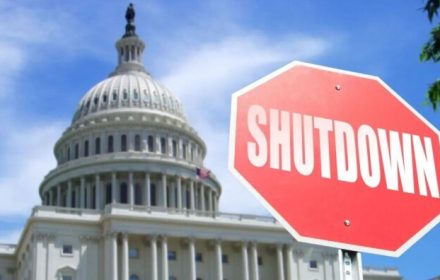The ranking of the best cryptocurrency exchanges in 2025 is shaped against the backdrop of fundamental changes. Exchanges have ceased to be just places for token exchange. Platforms compete in execution speed, balance transparency, advanced derivatives, order book depth, and strict regulation.
CoinDesk, Forbes, CoinGecko, and independent analytical agencies are noting a new balance of power: the leadership of large ecosystems and the strengthening of Asian players.
Evaluation Methodology and Key Metrics
The ranking of the best cryptocurrency exchanges in 2025 is based on several parameters: trading pair liquidity, transaction fees, fund storage reliability, compliance with KYC/AML, Web3 innovations, quality of futures and spot markets. Agencies take into account proof-of-reserves data, verify reserves through cryptographic proofs. Reports from MICA and VARA are considered, showing the level of regulation and work with institutional clients.
Comparison of Trading Fees and Real Load
The comparison of trading fees for cryptocurrency exchanges in 2025 shows that the average level for spot operations has decreased to 0.08–0.1%, and for futures to 0.02–0.04%. OKX maintains rates at 0.08% for makers and 0.1% for takers. Bybit offers 0.02% on futures for high volumes. KuCoin retains a model of 0.1% on spot with additional discounts for internal tokens.
Ranking of the Best Cryptocurrency Exchanges in 2025 by CoinDesk and Independent Analysts
CoinDesk experts along with independent analysts have analyzed the dynamics of the largest platforms and identified those setting market standards. The evaluation took into account liquidity, reserve transparency, Web3 innovations, and infrastructure reliability.
List of leaders:
- OKX enhanced transparency by being the first to implement automated proof-of-reserves verification with daily data updates. The platform opened a Web3 hub with wallets and DEX tools.
- Bybit increased derivatives liquidity and launched an advanced market data center for traders.
- MEXC accelerated the listing of new tokens, maintained flexible fees, and expanded support in the CIS region.
- KuCoin revamped its interface, introduced new DeFi integrations, and expanded its range of futures contracts.
- Gate.io strengthened user protection by conducting independent audits and modernizing KYC/AML processes.
CoinGecko notes the increase in the share of Asian exchanges, while Forbes highlights the shift of professional traders to platforms with deep order books and fast order execution.
Regulation: From MICA to VARA
The European MiCA regulation and Dubai’s VARA set strict standards for global cryptocurrency platforms. The ranking of the best cryptocurrency exchanges shows that licensed platforms are gaining the trust of institutional investors faster.
OKX and Bybit have obtained permissions to operate in the UAE, while KuCoin and Gate.io have strengthened cooperation with European auditors. Regulation reduces the risk of sudden service disruptions and enhances client security.
Innovations: Web3 and Reserve Transparency
Web3 technologies have moved beyond experimentation. Exchanges are deploying their own wallets, NFT markets, decentralized gateways for DeFi.
The ranking of the best cryptocurrency exchanges highlights OKX’s development of the Web3 ecosystem and Bybit’s active integration with Layer2 solutions. Proof-of-Reserves has become an industry standard: independent verifications confirm full client asset backing.
Comparison of Key Factors in Choosing Crypto Platforms
Choosing a platform in 2025 requires analysis not only of advertising promises but also of real operational metrics. An exchange becomes a full-fledged financial infrastructure where detail accuracy determines final profit.
Key parameters in choosing an exchange in 2025:
- Fees: low spread and flexible discount system for large volumes reduce costs.
- Liquidity: deep order books and millisecond order execution enhance entry and exit accuracy.
- Security: proof-of-reserves, multi-level authentication, cold wallets, and insurance funds protect capital.
- Regulation: MICA, VARA licenses, and others increase trust and reduce risks of sudden service shutdowns.
- Functionality: futures, spot, trading bots, Web3 tools, and advanced analytics help build strategies.
Such parameter checks allow evaluating a platform’s resilience to market jumps and regulatory changes. Comparing factors helps avoid unexpected costs and choose a platform suitable for a specific trading style.
Perspectives of Asian and Global Players
The CIS region maintains a high interest in international platforms. MEXC and OKX invest in interface localization, support ruble and tenge deposits through partner services. Bybit develops analytical tools and focuses on futures. Gate.io enhances KYC/AML control and attracts institutional clients. KuCoin experiments with Web3 products and native tokens to reduce fees.
Conclusions for Professional Trading and Investing
The ranking of the best cryptocurrency exchanges in 2025 confirms that the industry is maturing and transforming into a regulated financial infrastructure. Leaders offer a combination of high liquidity, strict security standards, transparent reserves, and expanded trading functionality. Market professionals evaluate not only fees and the number of instruments but also a platform’s ability to withstand stressful scenarios—sharp price fluctuations, liquidity outflows, regulatory checks.
OKX solidifies its status as a technological flagship, offering proof-of-reserves and Web3 integration. Bybit maintains leadership in derivatives and actively grows its institutional base. KuCoin bets on flexibility and global presence, MEXC works with local markets and accelerates the listing of promising projects, Gate.io invests in cybersecurity and compliance.
Global Competition and Trends
The global cryptocurrency exchange market is entering a phase of maturity where leadership is determined not by aggressive marketing but by technological resilience and operational transparency. Strengthening regulators and the growth of institutional demand are changing the power dynamics, forcing platforms to rethink development strategies.
The market has gradually divided into two camps:
- universal ecosystems with a full range of services—OKX, Bybit, KuCoin;
- niche platforms focusing on minimal fees and innovations—MEXC, Gate.io.
CoinDesk and Forbes emphasize that transparent proof-of-reserves and compliance with MiCA and VARA rules are becoming the main trust criteria. CoinGecko notes the growing influence of Asian exchanges that actively invest in Web3 and implement KYC/AML to operate globally.
Ranking of the Best Cryptocurrency Exchanges in 2025: Conclusions
The current ranking of the best cryptocurrency exchanges in 2025 shows that platforms leading are those capable of providing transparency, reliable technical foundation, and quick adaptation to new market rules. Exchanges ignoring licensing and reserve proof are gradually losing trust. Market participants win when analyzing real metrics: liquidity, fees, security, and functional depth.
 en
en  ru
ru  de
de  ar
ar  es
es  nl
nl  hi
hi  fr
fr  it
it  pt
pt  el
el 



